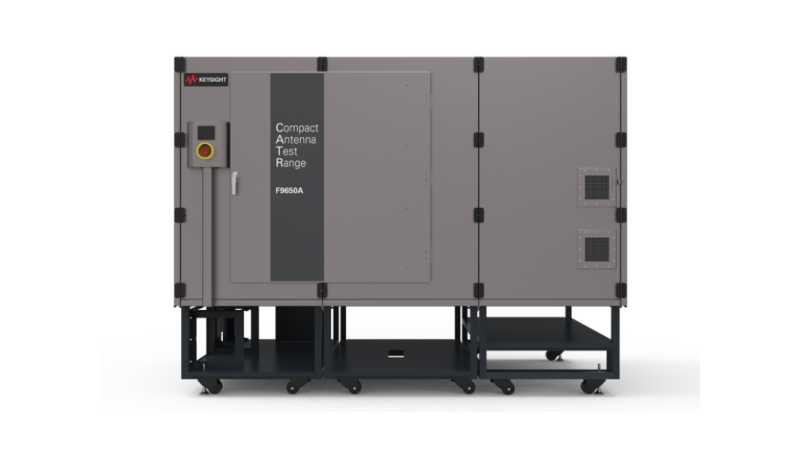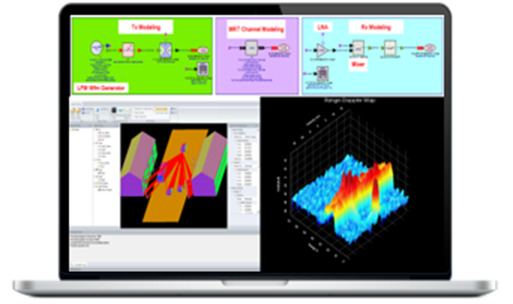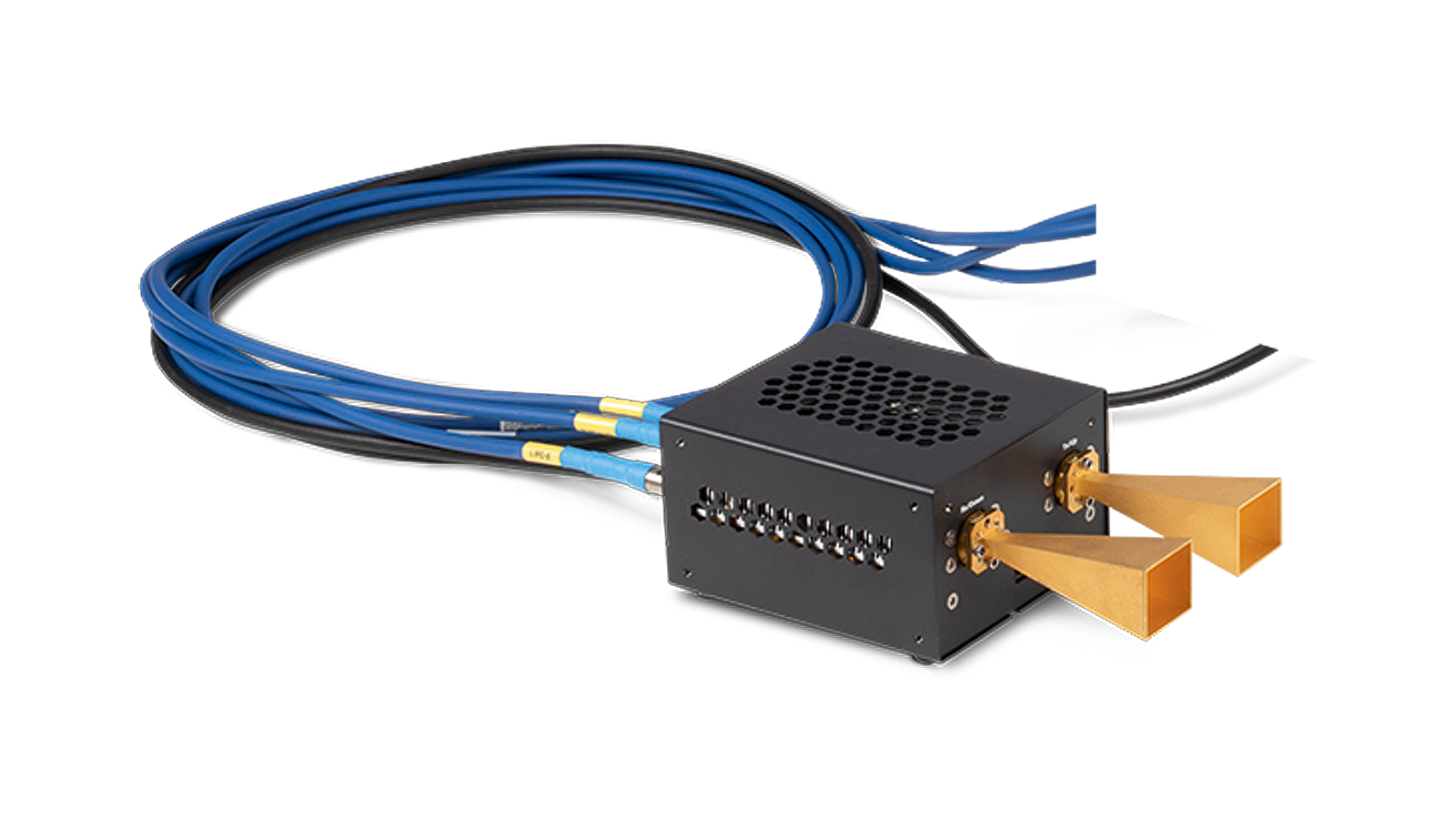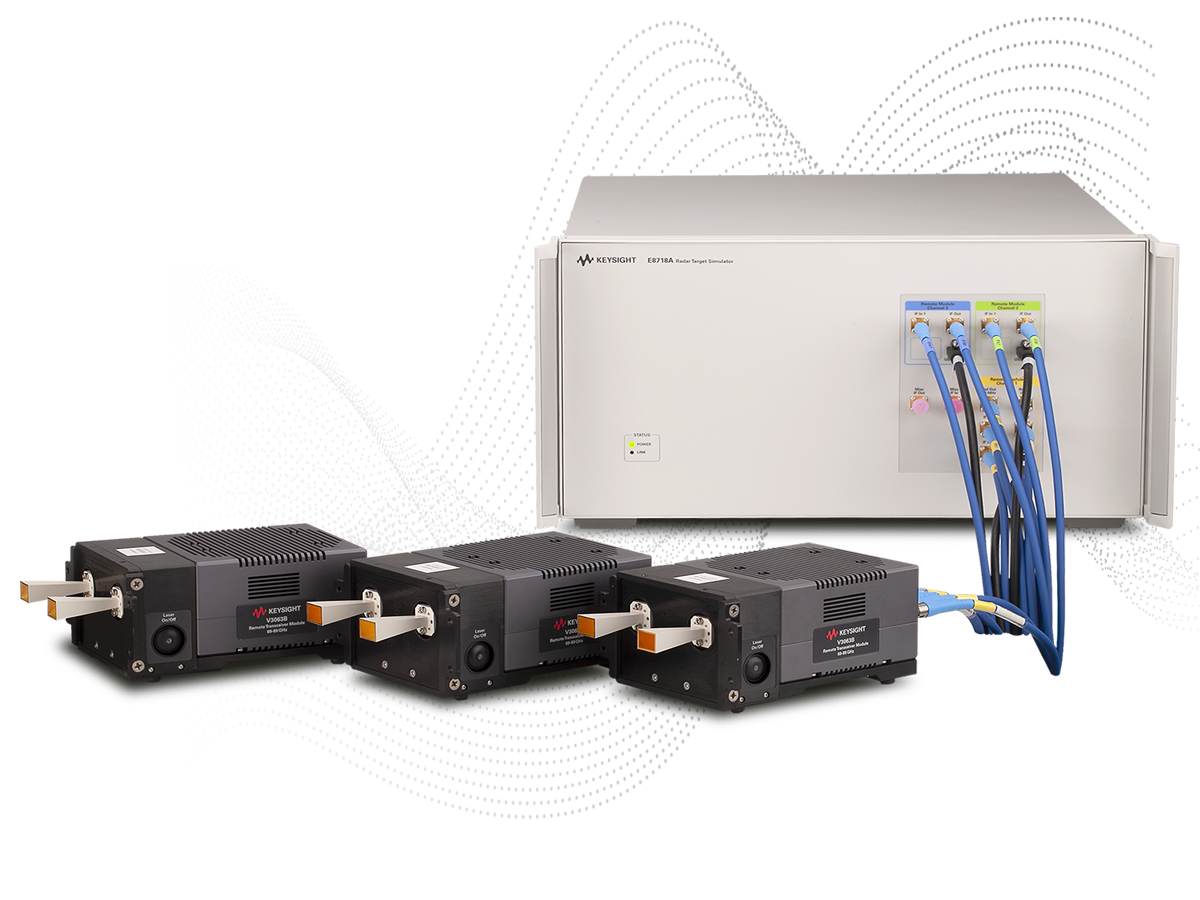Choose a country or area to see content specific to your location
-
PRODUCTS AND SERVICES
-
Oscilloscopes
-
Analyzers
- Spectrum Analyzers (Signal Analyzers)
- Network Analyzers
- Logic Analyzers
- Protocol Analyzers and Exercisers
- Bit Error Ratio Testers
- Noise Figure Analyzers and Noise Sources
- High-Speed Digitizers and Multichannel DAQ Solutions
- AC Power Analyzers
- DC Power Analyzers
- Materials Test Equipment
- Device Current Waveform Analyzers
- Parameter / Device Analyzers and Curve Tracers
-
Meters
-
Generators, Sources, and Power Supplies
-
Software
-
Wireless
-
Modular Instruments
-
Network Test and Security
-
Network Visibility
-
Services
-
Additional Products
- All Products, Software, Services
-
- Learn
- Buy
- Support
What are you looking for?
Automotive Radar
Test mmWave radar modules in the lab before testing on the road
Better Radar Transmission And Receiver Tests
Effective automotive radar system design requires comprehensive system validation. Keysight’s automotive radar solutions help your designs achieve maximum efficiency, reliability, and repeatability. Most importantly, they ensure your devices work to the highest safety standards and performance possible.
Validate sensor-fusion automotive radar designs for advanced driver assistance systems and autonomous driving applications.
Develop Robust Automotive Radar Sensors and Algorithms
Learn how Keysight’s first-to-market Radar Scene Emulator combines hundreds of miniature automotive radar target simulators into a scalable screen that can emulate objects with up to 512-pixel resolution and at distances as close as 1.5 m. Utilizing “total scene generation”, the radar scene emulation solution exercises automated drive systems and algorithms by applying time-synchronized inputs to the actual automotive radar sensors. This solution can help developers test new car assessment program (NCAP) scenarios for autonomous driving.
Radar Target Simulation
Simulating real automotive radar targets in a lab environment is a challenge for all automotive OEMs and suppliers. With the Keysight radar target simulation solution, you can simulate multiple objects with multiple distances at variable speeds. Your radar device-under-test “sees” these simulated objects as real items, enabling you to explore and analyze how your radar devices work under real-world conditions, all from within your lab.
More information
Frequently Asked Questions About Automotive Radar
What is automotive radar?
Automotive radar is a sensor technology that is finding increasing applications in advanced driver assistance systems (ADAS) to help drivers improve the safety and convenience of the driving experience. Automotive radar sensors are often used alongside lidar sensors and cameras to enable ADAS and increasingly automated driving.
Learn More
How to Test Automotive Radar
How does automotive radar work?
An automotive radar comprises a transmitter and a receiver. The transmitter sends out electromagnetic frequencies that hit (detect) an object, such as another vehicle. These signals bounce back to the receiver, determining the object's distance, speed and direction. Automotive radar operates in different ranges. Long-range radar can detect distances up to 250 m, while medium-range radar operates in the 1-60 m range. Short-range radar covers the 1-30 m range – useful for applications such as blind-spot detection.
Learn More
Visual Overview of Automotive Radar
What causes automotive radar interference?
As more vehicles become equipped with ADAS features, the proliferation of automotive radars operating simultaneously can cause interference, reducing the radar target detection performance of the radar and making perception information unreliable. Mitigating automotive radar interference is thus an important aspect of the product development cycle.
Read the White Paper
Mitigating Automotive Radar Interference
What are the benefits of using automotive radar?
Automotive radar is less sensitive to weather conditions compared with lidar or camera. Millimeter waves, or mmWave radar technology, is also popular with automotive radar system designers as it offers higher resolution and range, which help to enable safer driving in any condition.
Read the White Paper
How mmWave Automotive Radar Enhances ADAS
Further Reading
Want help or have questions?
- © Keysight Technologies 2000–2024
- Privacy
- Sitemap
- Terms
- Trademark Acknowledgements
- Feedback
- Accessibility














